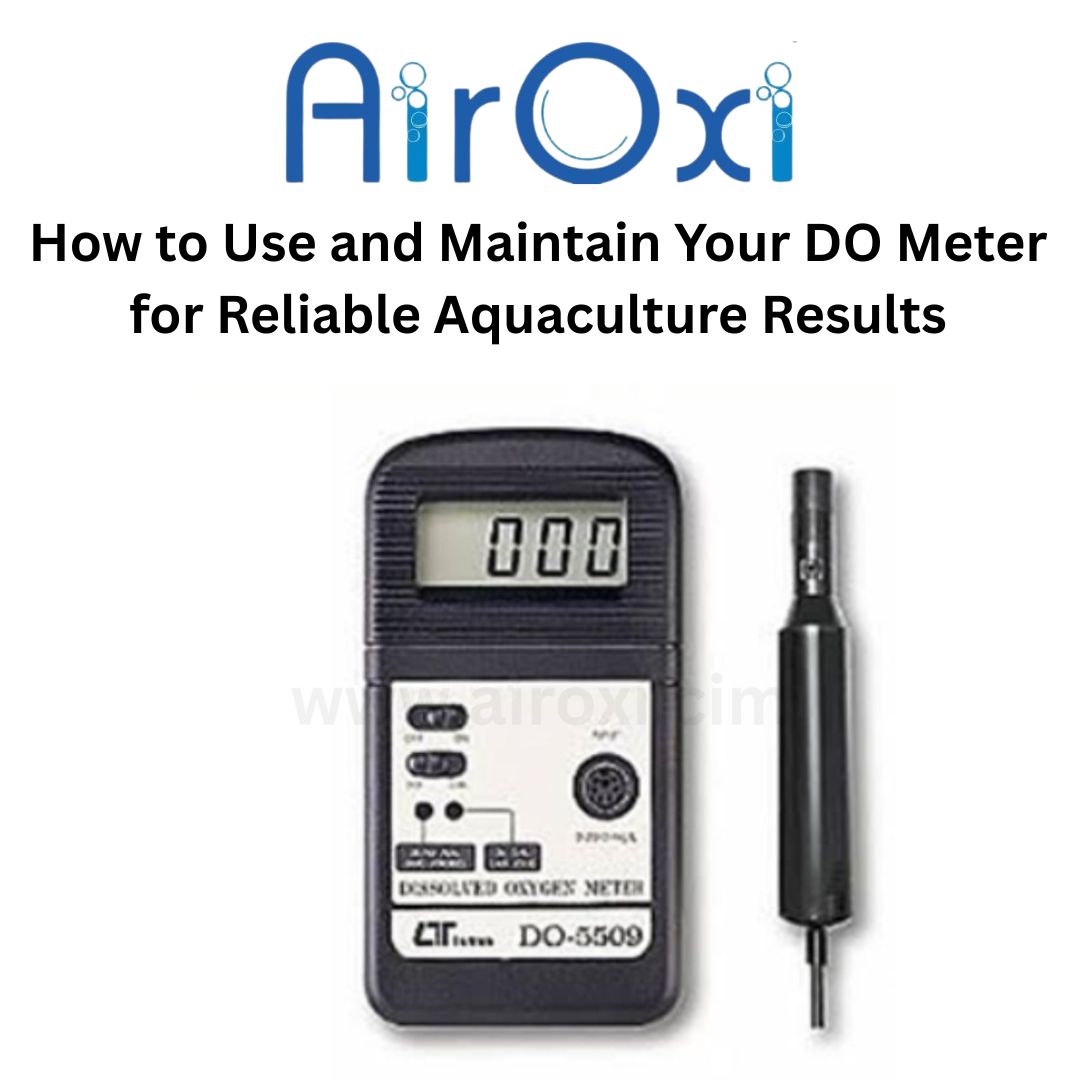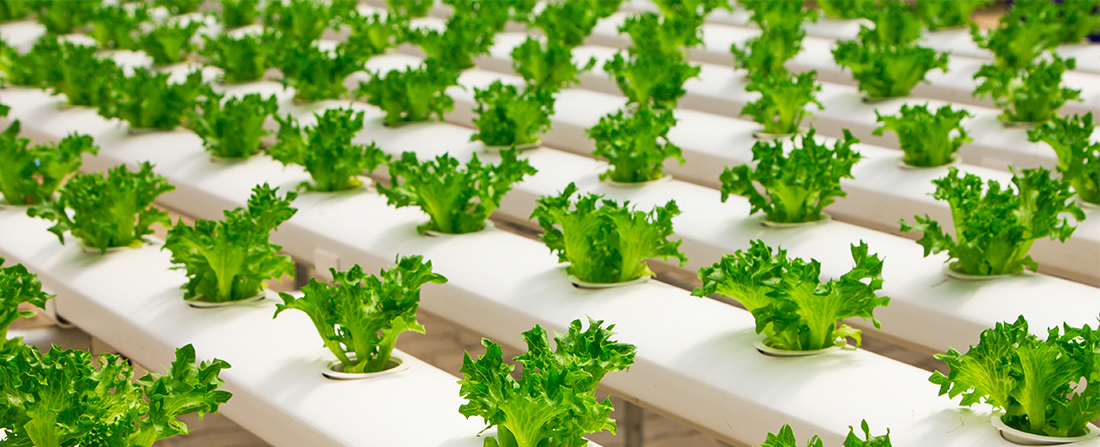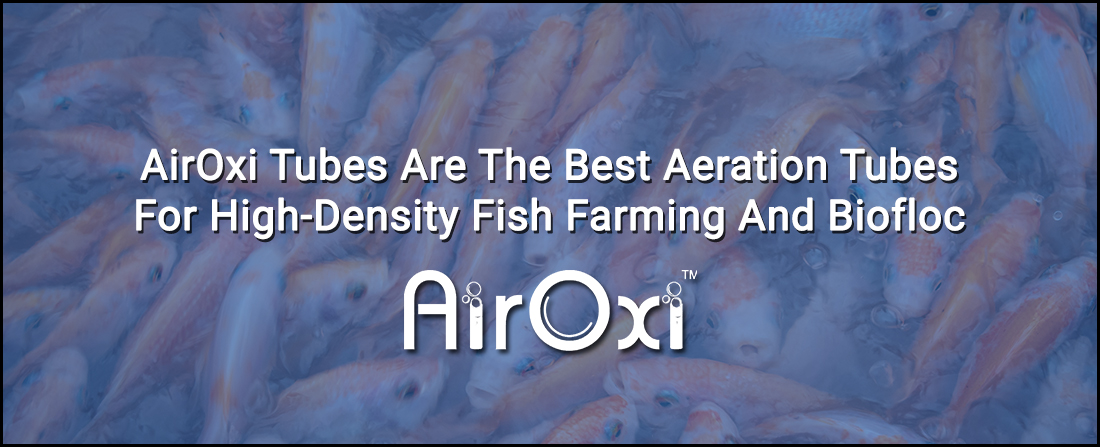In aquaculture, water quality is everything. One of the most critical parameters that affects fish health and productivity is dissolved oxygen (DO). Low oxygen levels can cause stress, slow growth, and even lead to fish kills. That’s why a Dissolved Oxygen (DO) meter is one of the most valuable tools in your kit. But like any precision instrument, it must be used and maintained properly.
This blog explains how aquaculture farmers can correctly use a DO meter and keep it in top condition for accurate readings and long-lasting performance.
For an accurate calculation of DO required for your pond, visit www.airoxi.com/calculator
Why DO Measurement is Crucial in Aquaculture
Fish and other aquatic species depend on dissolved oxygen to survive. In ponds, tanks, or cages, oxygen levels can fluctuate due to:
- Overfeeding and organic waste
- High temperatures
- Algal blooms followed by die-offs
- Nighttime respiration by plants and plankton
Monitoring DO helps you take corrective action, such as aeration, before fish health is compromised. For this, you need reliable readings, and that starts with using your DO meter correctly. More info click the link https://airoxitube.blogspot.com/2018/10/fundamental-checks-every-aquaculture-farmer-should-conduct.html
Types of DO Meters
Before diving into usage and care, it’s helpful to know the common types of DO meters:
- Electrochemical DO meters(membrane-based): Use galvanic or polarographic sensors. Require membrane replacement and regular calibration.
- Optical DO meters: Use luminescent technology, more stable and maintenance-friendly but costlier.
Both types need careful handling to provide trustworthy data.
Electrochemical vs Optical DO Meters – Pros and Cons
|
Feature |
Electrochemical Meters |
Optical Meters |
|---|---|---|
| Accuracy | Good, if regularly calibrated | Excellent, stable over time |
| Maintenance | Requires membrane and electrolyte replacement | Low maintenance |
| Calibration | Needs frequent calibration | Calibrates less frequently |
| Response Time | Slower than optical | Faster, more responsive |
| Power Consumption | Low | Higher (requires more power) |
| Cost | More affordable | Higher initial investment |
| Suitability | Good for budget-conscious farmers | Ideal for continuous, high-precision monitoring |
Summary:
If you’re looking for a low-cost option and are willing to do regular maintenance, electrochemical meters are suitable. But if you want greater stability, less calibration, and don’t mind a higher price, optical meters offer long-term benefits.
However for continuous tracking of DO always ensure that you use multiple probes at different locations and different depths
How to Properly Use a DO Meter
1. Calibrate Regularly
Before use, calibrate your DO meter:
- Daily calibration is recommended, especially for electrochemical models.
- Calibrate in water-saturated air or with a standard zero oxygen solution (usually sodium sulphate -based) and a 100% air saturation environment.
- Make sure you’re calibrating at the ambient temperature and pressure of your farm area.
✱Tip: Always follow the calibration instructions in the manufacturer’s manual.
2. Handle the Probe Gently
The sensor tip is delicate. When using the meter:
- Avoid touching the sensor or membrane surface.
- Don’t bang or scrape it against pond walls or stones.
- Use the protective cap when not in use.
3. Use in the Right Conditions
- Submerge the probe fullyin the water column where you want the reading.
- Avoid letting air bubbles collect near the sensor tip.
- Let the reading stabilize (especially with electrochemical sensors).
- Take readings at consistent depths and times to track trends.
- If using electro chemical DO meter, ensure the probe is moving up and down slowly for accurate readings. Stationery reading will not be accurate
4. Mind the Temperature
DO levels vary with water temperature. Most modern meters compensate for temperature, but ensure the temperature probe is working correctly. DO calibration and readings should be done after allowing the probe to equalize with the water temperature.
How to Maintain Your DO Meter
Even the best meter will fail if poorly maintained. Here’s how to keep yours in top shape.
1. Clean the Sensor After Each Use
- Rinse with clean, distilled water after each reading session.
- If you’ve been in muddy or brackish water, gently rinse off debris without scrubbing.
- For tougher grime, use a soft cloth or swab, never abrasive materials.
2. Replace Membranes (Electrochemical Meters)
- Membranes wear out over time. Replace them as per manufacturer guidelines (often every 2–4 weeks with regular use).
- Use only approved replacement kits—cheap substitutes may damage the sensor or give false readings.
- Check for bubbles when filling electrolyte—no air bubbles should be trapped under the membrane.
3. Store It Properly
- Do not let the sensor dry out. Electrochemical sensors should be stored with the membrane moist.
- Use the storage cap with a sponge or small piece of tissue soaked in water or electrolyte.
- Optical sensors often come with specific storage instructions—follow them strictly.
4. Check the Battery
Low battery can cause erratic readings or power loss. Keep spare batteries on hand and replace them when needed. Rechargeable models should be topped up regularly.
5. Annual Servicing
Even if it seems to be working well, have your meter:
- Serviced annually by an authorized technician
- Recalibrated with certified solutions
- Checked for firmware updates (for digital models)
Common Mistakes to Avoid
- Skipping calibration: Always calibrate if the meter hasn’t been used in over 24 hours.
- Using a dried-out membrane: Replace membranes if they look dry or cracked.
- Leaving it in the sun: Excessive heat can damage the sensor and screen.
- Ignoring odd readings: If numbers look off, recalibrate or check for membrane damage.
Final Thoughts
A DO meter is like a compass for your aquaculture operation. It tells you when to aerate, when to feed less, and when your pond ecology is healthy. But just like a compass, it’s only helpful if it’s accurate. By taking just a few minutes each day to calibrate, clean, and store your DO meter properly, you’ll protect your fish stock and your investment.
Whether you’re growing shrimp, catfish, or carp, water quality can make or break your season. So treat your DO meter like the critical tool it is. Visit www.airoxi.comfor more information
Breathe life into your pond—keep your DO meter in top form.
Contact AirOxi for your aquaculture aeration requirements
+917041004098






 WhatsApp us
WhatsApp us
Leave A Comment